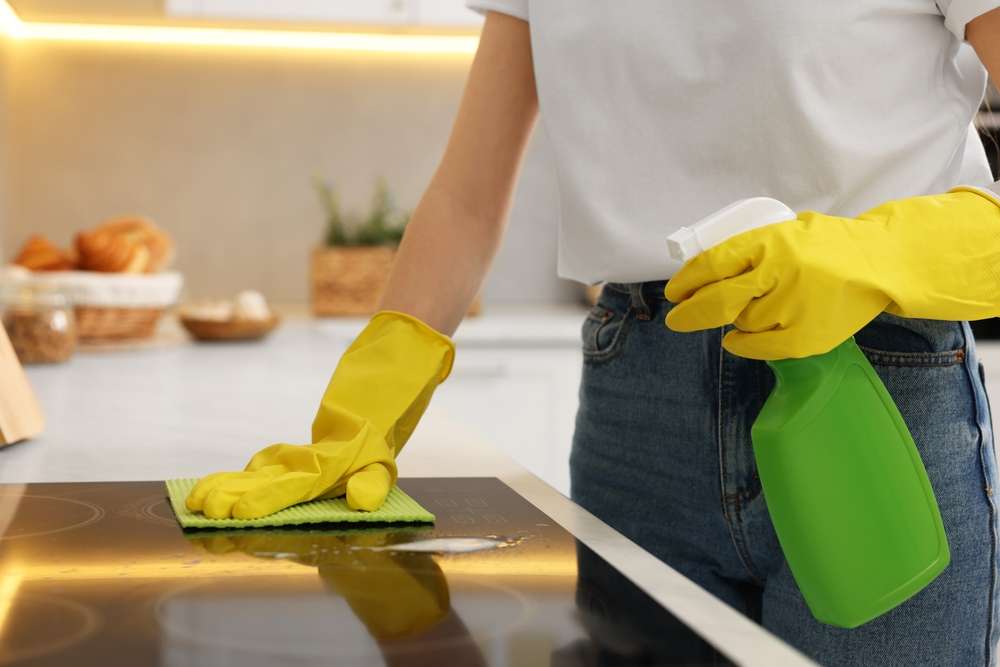How to Clean Tiles And Grout Without Causing Damage
Maintaining clean tiles and grout is essential for preserving the beauty and longevity of your floors and walls. However, using harsh chemicals or improper cleaning techniques can lead to permanent damage. This comprehensive guide explores effective, gentle methods to keep your tiles sparkling and grout lines pristine without risking the integrity of these surfaces.

Tiles and grout are popular choices for kitchens, bathrooms, and other areas prone to moisture and staining. While these materials are relatively durable, they require proper maintenance to stay looking their best. Improper cleaning methods can lead to discoloration, erosion, or permanent damage to both tiles and grout. Understanding the right techniques and products to use can help maintain the appearance and extend the life of your tiled surfaces.
Understanding Different Tile Materials and Their Cleaning Needs
Not all tiles are created equal, and different materials require specific cleaning approaches. Ceramic and porcelain tiles are typically more resistant to stains and can withstand stronger cleaning solutions. Natural stone tiles like marble, granite, or travertine are more porous and sensitive to acidic cleaners. Before cleaning, identify your tile type to choose appropriate products and methods. For instance, vinegar solutions that work well on ceramic might etch and damage natural stone surfaces. Always test any cleaning solution on a small, inconspicuous area first to ensure it won’t cause discoloration or damage.
Common Causes of Grout Discoloration and Buildup
Grout lines are typically the first areas to show dirt and discoloration due to their porous nature. Several factors contribute to grout deterioration, including moisture accumulation, soap scum buildup, food particles, and mold growth. In high-traffic areas, dirt particles can become embedded in grout, making it appear darker over time. Bathroom grout often develops pink or black spots due to mildew and mold growth in the humid environment. Understanding these causes helps in selecting the right cleaning approach and establishing preventative maintenance routines to keep grout looking fresh longer.
Effective DIY Solutions for Cleaning Tiles And Grout
Several household ingredients can effectively clean tiles and grout without causing damage. For regular maintenance, a solution of warm water and mild dish soap works well for most tile types. For deeper cleaning of grout, make a paste using baking soda and water, apply it to grout lines, and scrub with a soft brush. Another effective option is hydrogen peroxide mixed with baking soda, which helps tackle stubborn stains while being gentle on surfaces. For ceramic or porcelain tiles, a solution of equal parts white vinegar and warm water can remove soap scum and hard water deposits. Always rinse thoroughly after cleaning to remove any residue that might attract more dirt.
Professional Products That Clean Tiles And Grout Safely
When DIY solutions aren’t enough, commercial products specifically formulated for tile and grout cleaning can provide excellent results. Oxygen-based cleaners like OxiClean or specialized grout cleaners from brands like Black Diamond and Grout-Eez offer effective cleaning without damaging most surfaces. For natural stone tiles, pH-neutral cleaners from companies like StoneTech or Miracle Sealers are designed to clean without etching or dulling the surface. Enzymatic cleaners can help break down organic matter in grout lines. When selecting commercial products, always check manufacturer recommendations for your specific tile type and avoid products containing harsh acids or bleach that can damage grout over time.
Tools and Techniques for Gentle Yet Effective Cleaning
The right tools can make tile and grout cleaning more effective while minimizing damage risks. Soft-bristled brushes, including old toothbrushes for tight spaces, provide enough scrubbing power without scratching tiles. Microfiber mops and cloths effectively capture dirt rather than spreading it around. For deeper cleaning, consider using a steam cleaner, which uses heat to loosen dirt without chemicals. When scrubbing grout lines, work in small sections and move the brush in circular motions rather than back and forth, which can wear down grout. For stubborn stains, allow cleaning solutions to sit for 10-15 minutes before scrubbing, but never leave acidic solutions on surfaces for extended periods.
Comparison of Tile and Grout Cleaning Methods
Different cleaning approaches offer varying benefits depending on your specific needs and tile types. Here’s a comparison of common methods to help you choose the most appropriate option for your situation:
| Cleaning Method | Best For | Effectiveness | Cost Estimation | Potential Risks |
|---|---|---|---|---|
| Baking Soda & Water | Light stains, regular maintenance | Moderate | $2-5 per application | Minimal risk, labor-intensive |
| Hydrogen Peroxide Solution | Moderate stains, discoloration | High | $3-7 per application | May lighten colored grout |
| Commercial Grout Cleaners | Deep stains, heavy soiling | Very High | $8-20 per bottle | Chemical exposure, potential grout damage |
| Steam Cleaning | Deep cleaning, sanitizing | High | $40-200 for machine | Potential grout erosion if overused |
| Professional Cleaning | Severe staining, restoration | Very High | $250-650 for average bathroom | Minimal when done properly |
Prices, rates, or cost estimates mentioned in this article are based on the latest available information but may change over time. Independent research is advised before making financial decisions.
Preventative Maintenance to Keep Tiles and Grout Clean Longer
Establishing a regular maintenance routine significantly reduces the need for deep cleaning and extends the life of your tiles and grout. Daily wiping of shower walls after use prevents soap scum buildup. Weekly mopping with a pH-neutral cleaner maintains floor tiles. Applying a high-quality grout sealer every 1-2 years creates a protective barrier against moisture and stains, particularly important in wet areas like bathrooms and kitchens. Consider using shower sprays that prevent mineral deposits in bathrooms. Placing mats in high-traffic areas and immediately cleaning spills, especially acidic substances like wine or tomato sauce, prevents stains from setting into grout. Proper ventilation in bathrooms reduces moisture that leads to mold growth in grout lines.
Maintaining clean tiles and grout doesn’t require harsh chemicals or damaging techniques. By understanding your tile material, choosing appropriate cleaning methods, and establishing regular maintenance routines, you can preserve the beauty of your tiled surfaces for years to come. Whether you opt for simple DIY solutions or invest in professional products, gentle but consistent cleaning is the key to keeping tiles sparkling and grout lines fresh without causing damage. Remember that prevention is often easier than restoration, so developing good habits like prompt spill cleanup and regular light cleaning will minimize the need for more intensive treatments later.



